The Sustainable Fat Loss Lifestyle—And More, Interview with Terry Joel, RKC
By Adrienne Harvey, SrPCC, RKC-TL, CK-FMS
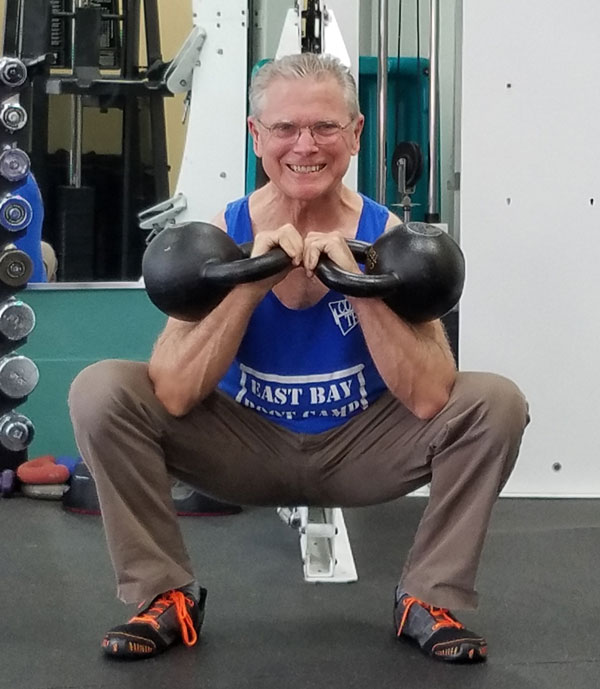
Dragon Door: It sounds like you've had a life-long interest in fitness. How did you get started?
Terry Joel: I'm 69 as of this month, but I had a few interesting years between the ages of 19-23. At that time, my lifestyle led me to weigh about 112lbs—so, obviously I was neither fit nor healthy! And considering the people who I was hanging out with at the time, I was probably on my way to an early death.
Then for some reason in October 1973, I woke up, went to the beach, and took my skinny body on a run. Of course I only went about a quarter of a mile because I was still smoking a pack and a half of cigarettes a day. On my way home from the beach that day, I stopped at Lionel Playworld and bought a 110lb plastic coated concrete barbell and dumbbell weight set.
I remember everybody telling me that I’d last about two weeks before I quit. But, here I am several decades later! One thing led to another and another and a year and a half later I wasn’t smoking, doing drugs, or drinking anymore. I’d started hanging out in gyms instead of unhealthy places.
Dragon Door: That's fantastic! Did that lead to your career in fitness?
Terry Joel: I was a waiter at a high end restaurant in South Florida—and while I hated the job it paid the bills. One cool thing about the job was that the restaurant closed from May to October every year because the type of food they served was out of season. So, every summer I had the opportunity to try something else. I went to paramedic school which didn't work out as a career but eventually made me a better trainer and came in handy a few times in the gym. I tried nature photography for a while, and had a gallery and gift shop in Bar Harbor, Maine in the summer. I tried other kinds of photography too, but never could start a photography business.
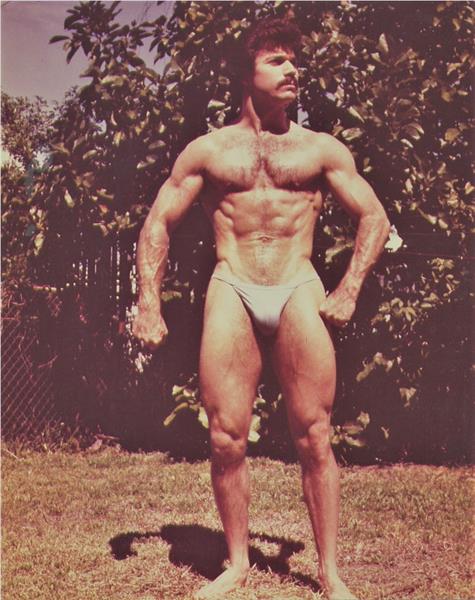
In my early 40s, somebody told me about Anthony Abbott’s Fitness Institute in Boca Raton, Florida. He has pretty rigid standards for training people to earn the National Strength and Conditioning Association and American College of Sports Medicine personal training certifications. They were the two big certifications at the time. So, I started that two-year journey of learning. I figured because of my bodybuilding experience it would be a snap—but it wasn't. I had to forget what I thought I knew!
Dr. Abbott introduced me to Juan Carlos Santana who was one of the top three functional fitness instructors in the world in those days. What I learned from him is the basis of my East Bay Boot Camp today. It’s based on metabolic circuits with between 12-20 exercise stations—periods of time under tension then a break—and it's actually more like group personal training. I also offer individual
personal training.
After I graduated from the Fitness Institute and earned my personal training certifications, I set up a studio in my garage. While I trained a client here and there, I didn't really have a business because my old job as a waiter kept paying the bills. I hated the job, but it was lucrative—and gave me the summers off to do whatever I wanted.
In July of 2001, I started messaging with a lady in California. We had a mutual interest and she said she wished that someone like me lived nearby. At the time I thought to myself, fat chance I’d leave Florida. (And now we’ve been married since 2004!) When I went out to meet her for a short weekend, I found that it was difficult to return home. Eight months later I quit the job I hated and moved to California. When she had visited me in Florida, she told me she knew I was born to be a trainer when I showed her the gym in my garage.
Six weeks after I moved to California, I was tempted to get a job in a restaurant since I hadn’t found a place to train. But, Diane, (now my wife) believed in me and told me, "You're a trainer, keep looking for the right gym." I eventually found Maverick’s Health club and started personal training there. I built up a good following in the Clayton-Concord area.
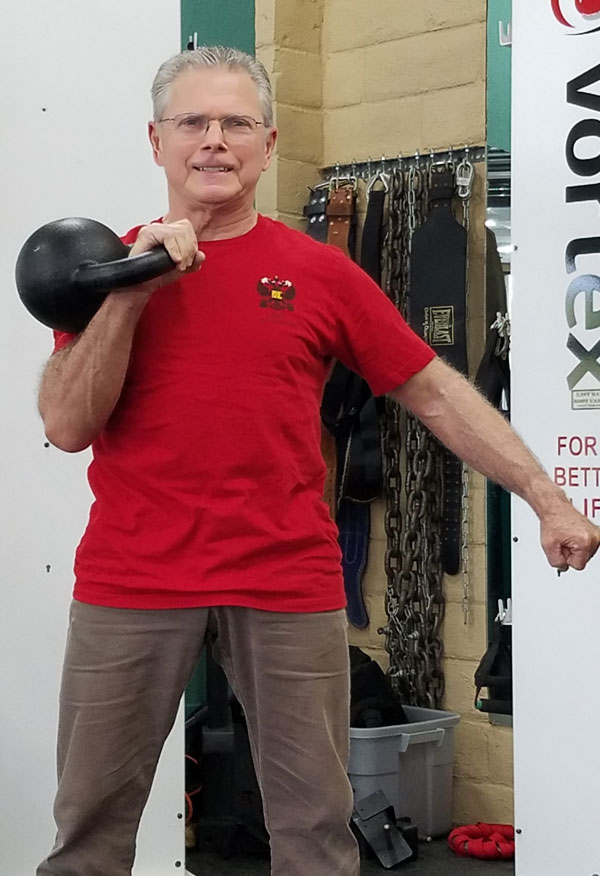
When that gym closed, I found Clayton Fitness, a small family gym. It was only 5,000 square feet but really cool. I've been there for three owners—all of who’ve had a similar training philosophy to mine. The current owner, Bob Wilber, has been there for three years and is a friend of mine. We speak the same training language but with different accents.
Many of my clients and boot camp participants have trained with me for years—some even followed me from the first gym. One reason people stay with me for so long is because I teach a sustainable fat loss lifestyle. I also make sure to work with people at their level—some get a nudge, some get a push, and some people really need you to lift them up. I think
personal training is an art as well as a science.
Dragon Door: How did you decide to go to the HKC and the RKC?
Terry Joel: Long ago, I bought the
Enter the Kettlebell book and
DVD. I really learned a lot from it and appreciated the precision of Pavel’s instructions. They were very specific which was different from most fitness books or DVDs. Since I already had a USA Weightlifting certification my lifts were pretty good, the timing of lifts like snatches came naturally. One great take-away from Pavel’s book was the principle of making your kettlebell training time a "practice" rather than a workout. This helped me to enhance my focus and precision instead of just making myself tired.
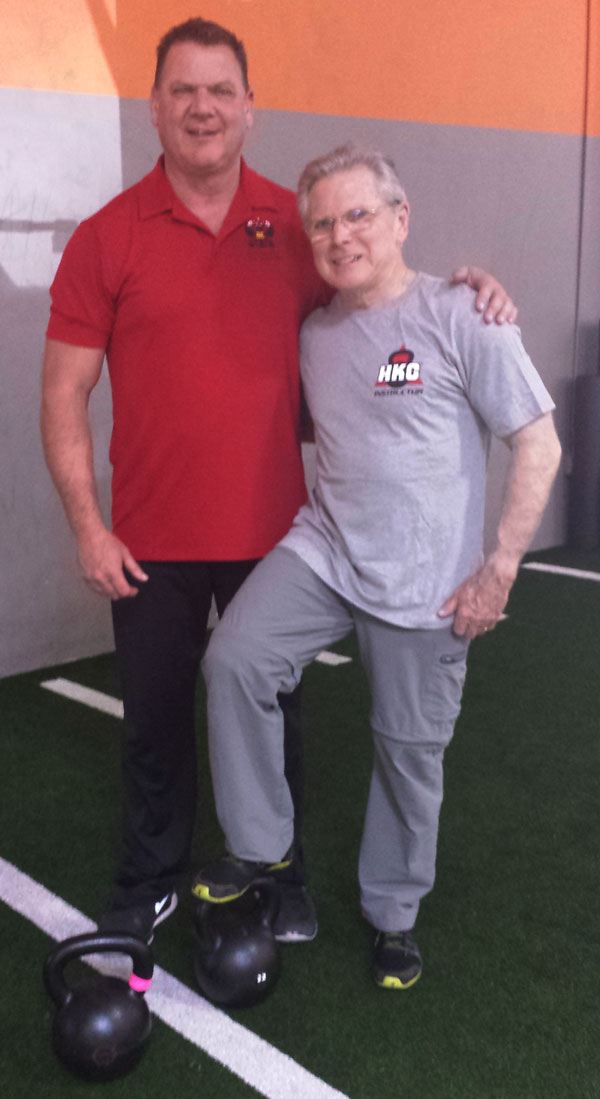
I also saw
Dan John at several NSCA conferences and fitness industry conferences. Meanwhile my RKC kettlebell collection had grown from one 16kg kettlebell to enough kettlebells to train small groups. I’m fond of
RKC kettlebells because of their high quality. They fit well in the hand and fall better on the forearm. The RKC handles are smooth and have a good thickness. Cheap kettlebells have terrible handles and rip your hands—even though the often just a little less than RKC kettlebells. I wouldn't let a friend do 50 or 100 snatches with a cheap kettlebell.
About two years ago, I saw that Dan John was teaching an HKC nearby in Mountain View. Since Dan John was teaching it, I had to do it!
At the
HKC, I learned some great coaching cues for the get-up and for perfecting the goblet squat. I started thinking about the RKC—but I also thought I might be a little too old to do it. Then, a young lady named Jackie McGraw was looking for a kettlebell instructor and found my HKC instructor page on the Dragon Door website. She already had some familiarity with kettlebells, and although she’s petite, she's strong as heck. She's turned out to be a great friend and we studied for and did the RKC together. Now she even leads my classes for me when I’m away.
When we started preparing for the RKC, I had been considering the San Diego RKC in May which would have given me plenty of time to train. While looking at DragonDoor.com near the end of last October, I found an
RKC Workshop scheduled for Pleasant Hill in February. Pleasant Hill is only ten minutes away from me, so I wouldn’t have to travel, fly or get a hotel. But, I would only have three months to train instead of six. Since I was about 60% ready, I knew the rest would take some work. I figured out a plan from my notes at the HKC with Dan John.
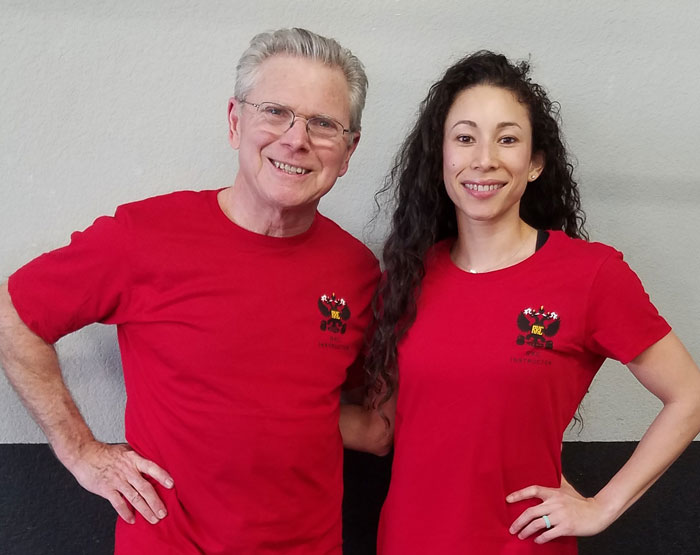
I printed out
Dan John’s 20-day training program and trained with consistently it for those three months. The program worked very well, and I added extra swings and snatches at the end. By the time February came around, I was doing pretty well even though I had recovered from blowing out both rotator cuffs. (I had had surgery on both of them and years of physical therapy starting in 2011.) Also, I have grade three lumbar spondylosis in the L5 to S1 vertebrae from a bad fall while showing off in 1978. An orthopedic surgeon told me that if I hadn’t been working out for my whole life, I’d be in a wheelchair now! It’s essential for me to keep my back strong with get-ups and other exercises.
Dragon Door: How did the RKC Snatch Test go for you?
Terry Joel: I had to test with the
18kg kettlebell, and even though it’s just a little more than five pounds heavier than a 16kg, with the velocity of snatches, that five pounds becomes a lot more. About two weeks before the RKC, I tried the test on a Wednesday and quit after doing about 25 snatches. A few days later I did it again since I had to get 50 snatches no matter what—and I did it, even though it was a little sloppy.
The week before the RKC, my training partner, Jackie McGraw, and I decided to practice the technique test and snatch test together. This time at around 26 reps, I wished I could put it down, but I kept going and got the 50 reps in 2 minutes and 40 seconds—this gave me 20 seconds to spare. This gave me confidence going into the weekend. On the day of the test, I just went and did it. After 50 reps, I put the kettlebell down and felt great.
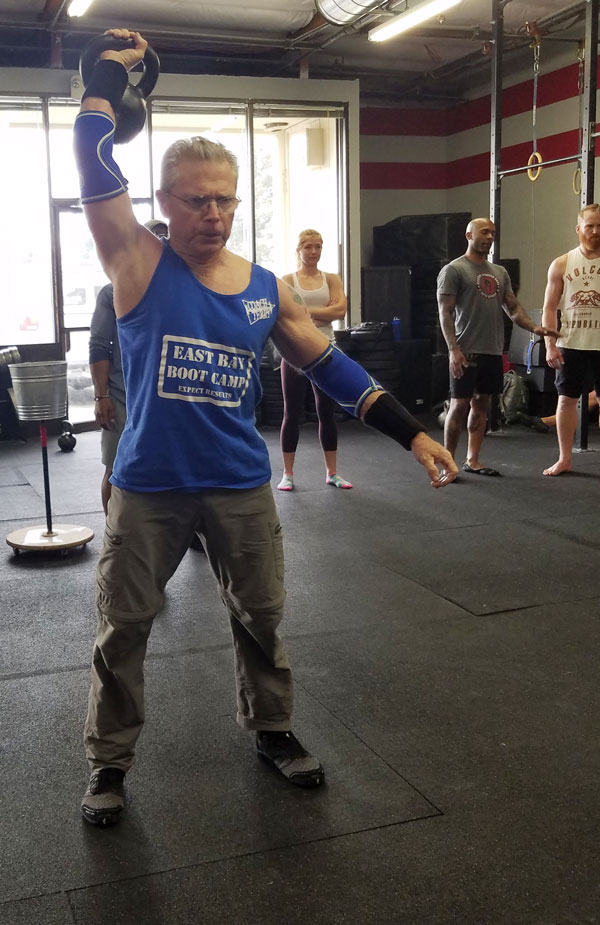
Dragon Door: What did you like the most about your kettlebell workshop experiences?
Terry Joel: The coaching cues I got from each
workshop supplemented each other. I learned a lot from Dan John at the HKC, and also at the RKC from the other instructors there. I cue I remember from Dan John helped my training partner get through a sticking point on her get-up—he said to think of it as a roll-up, not a get-up. After hearing the cue she tried it again, rolling more from the side to the first position. It made sense to her, and her get-up was even more beautiful than before. At the HKC,
Chris White gave me another great coaching cue for the get-up: corkscrew your arm into the ground when you're getting up. All these little things add up.
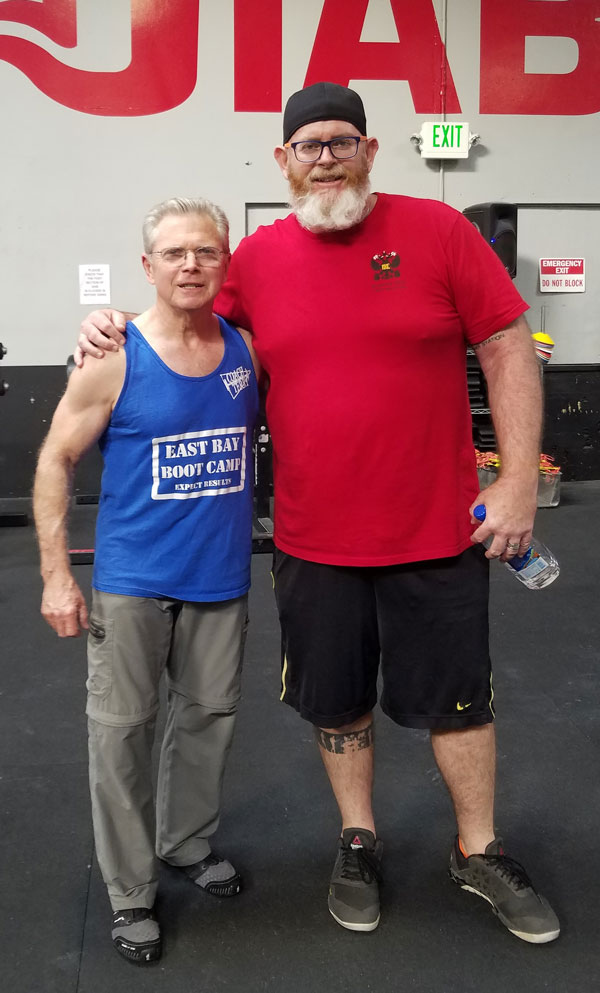
The RKC weekend with
Chris Holder was amazing. He brought attention to detail to a new level. He also taught me that I can do a lot more than I thought I could. Chris Holder also led a little
qigong session before one of the days at the RKC. During a break, we talked and realized that we had some favorite authors in common. I practice Tai Chi, but really every exercise for me is a ritual—even when I do back squats. It's almost like a meditation. It’s you, the bar, the weight, and the movement.
Dragon Door: What’s been your secret for maintaining a fitness regimen for decades?
Terry Joel: Aside from the fact that I just naturally love exercise, with the injuries I've had, it's basically essential that I train. But, I enjoy it! My two favorite lifts are the bottoms-up kettlebell press and the
get-up. Those are tools for me, yet they're not the only tools I use. I still practice many traditional exercises too.
In my own training, I’ll put a circuit together with step ups, standing presses, and single leg deadlifts for example. Then between every exercise, I'll do 10-15 kettlebell swings. This creates a gigantic metabolic disturbance between the different athletic movements. On other days I do goblets, swings and get-ups.
At my age, I also need to recover, so sometimes I will take a couple days off. I also take about 20-30 minutes to warm up for a workout. There's no cartilage in my radial head at the elbow so my arms don't fully straighten. My snatches look a little funny, and my get-ups are not locked out either, but that's just how my arms are now. You work with what you have!
When I practice get-ups, I always start by balancing a Valslide on my hand instead of a shoe. Then I use a
12kg, 14kg, 16kg, 18kg, etc. kettlebell. When I increase the weight, it seems like my technique improves. I generally like working up to a weight because that lets the central nervous system and muscles have a chance to warm up to the effort.
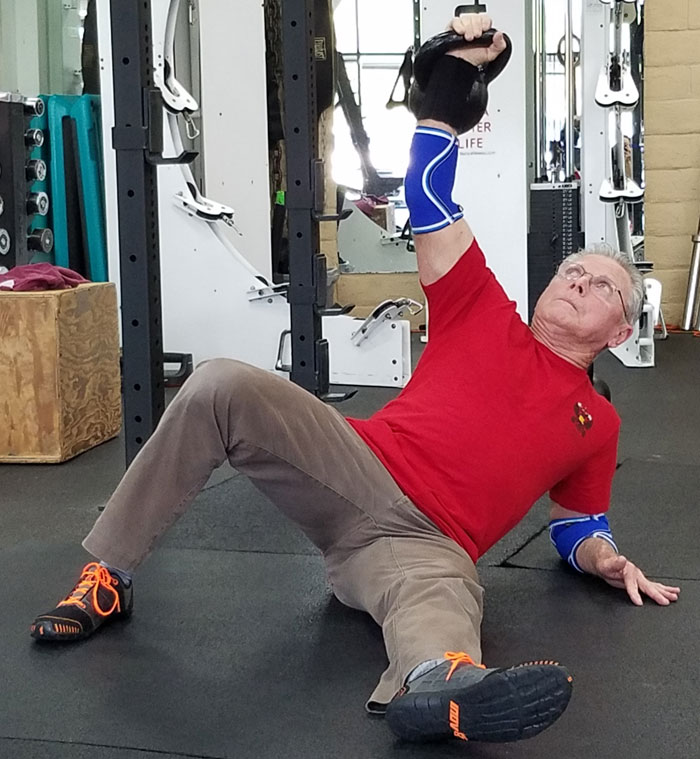
Dragon Door: Now that you’ve earned your RKC certification, what's next for you?
Terry Joel: Now that I'm more confident with the intricacies of teaching the
RKC progressions, I plan to run a series of kettlebell mastery workshops at the gym. This will let me spend an entire session teaching and perfecting one lift at a time. Then we will put all the lifts together at the final workshop. After the workshops, I’d like to form a small group class of the participants that meets regularly for fantastic kettlebell practices.
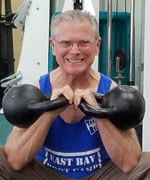 Terry Joel, "Coach Terry" RKC trains groups as East Bay Boot Camp and individuals at Clayton Fitness Center in Clayton, CA and at Encore Gymnastics in Walnut Creek, CA. Contact him at terry@coachterrysfitness.com or 925-586-3649. Follow him on Facebook at East Bay Boot Camp.
Terry Joel, "Coach Terry" RKC trains groups as East Bay Boot Camp and individuals at Clayton Fitness Center in Clayton, CA and at Encore Gymnastics in Walnut Creek, CA. Contact him at terry@coachterrysfitness.com or 925-586-3649. Follow him on Facebook at East Bay Boot Camp.
Back